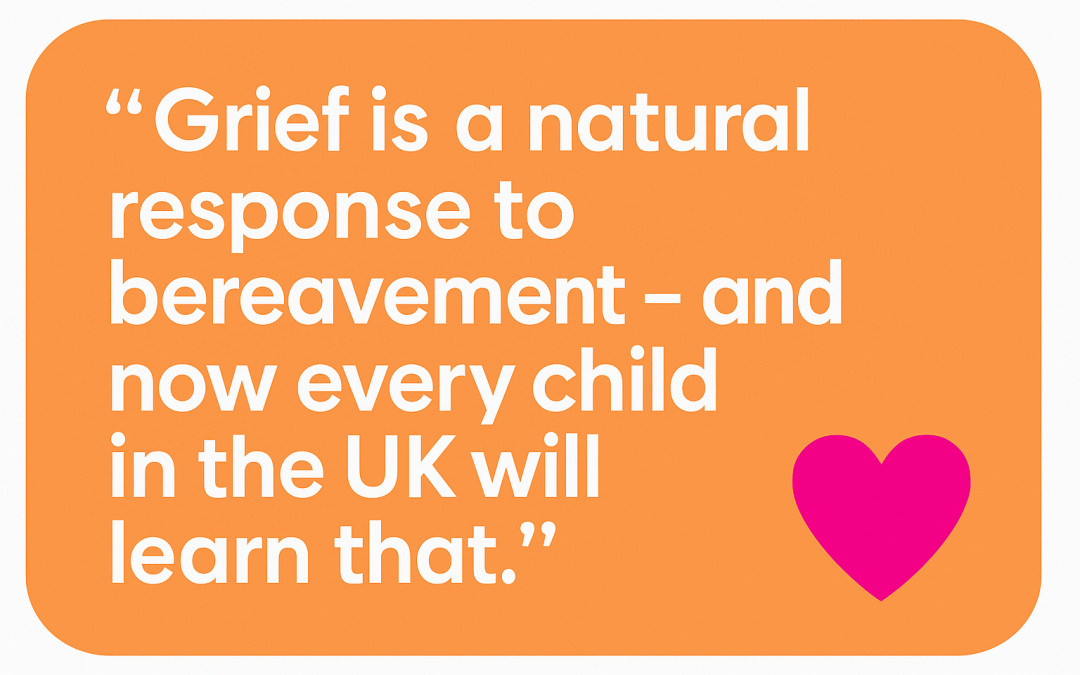For years, conversations about grief have been hidden behind closed doors. For too many, the first time they learn about loss is when it arrives, very suddenly and really painfully.
But now, that’s changing. And for very real and personal reasons, we’re proud to say: we’ve backed making it happen.
This week, new RSHE statutory guidance was published, confirming that grief education will now be part of the national curriculum.
It’s official:
By the end of primary school, children will be taught that:
“Change and loss, including bereavement, can provoke a range of feelings, that grief is a natural response to bereavement, and that everyone grieves differently.”
And by the end of secondary school, they’ll also learn:
“How families and relationships change over time, including through birth, death, separation, and new relationships.”
This might sound simple. But to the families we support, and to the children and young people navigating loss, this is monumental.
A Win for Compassion
We’ve been proud supporters of John Adams, a passionate advocate who has spent years campaigning for this very change. His work; and that of many others in the grief, education and bereavement support communities, has finally paid off.
This is more than policy. It’s a cultural shift which is set to help ensure future generations are better equipped, emotionally and mentally, to understand and support each other through grief.
As an organisation we’ve always believed in starting the conversation, rather than avoiding it. That grief education is not just for adults, and certainly not something to “protect” children from.
Because the truth is, children grieve too (thanks to our work with Child Bereavement UK we know that 127 children every day loose a parent or carer in the UK). And they deserve to know that their feelings are valid, and normal.
What Happens Next?
Now that grief education is included, the next stage is all about how it will be delivered, and how schools, parents, carers and young people can engage with it meaningfully.
We’ll be keeping a close eye on the developments and continuing to support this initiative however we can.
If you’d like to read the new guidance in full, you can do so here.


Recent Comments